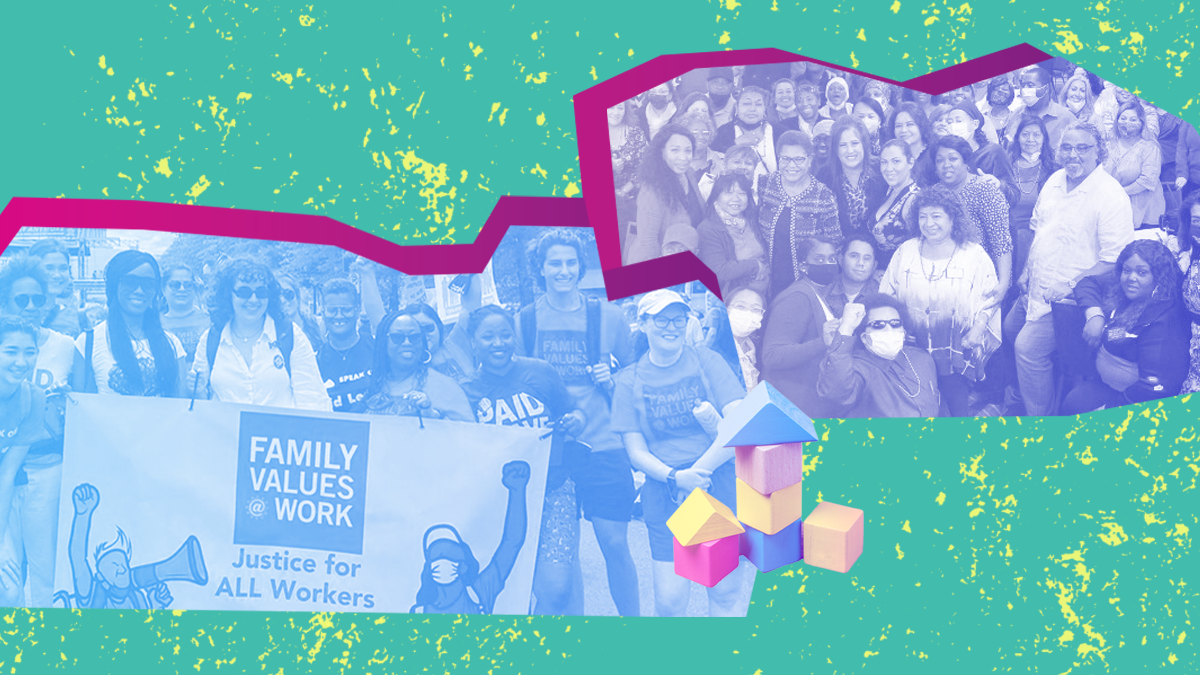All gifts, up to $10,000, TRIPLE-matched until June 30!
Tax Credits Are Not the (Full) Solution to the Child Care Crisis

If you have children (or know anyone who does), then you know that child care has long been unaffordable and hard to find, and that early educators are vastly undercompensated for the critical work they do every single day. But you might not realize that things could start to get a whole lot worse in just 16 days when $24 billion of funding that has helped to stabilize the child care sector expires—pushing millions of children out of care.
So, what’s the solution?
It’s pretty clear that only public investments will make child care available to all families that need it. But some politicians say we can’t afford that approach. Instead, they propose increasing child care-related tax benefits as a way to solve the escalating crisis. But while tax credits can play a complementary role to a large-scale federal investment in child care, they are not the (full) solution we need at this moment.
One of these tax credits is the Child and Dependent Care Tax Credit (CDCTC). The CDCTC allows families to get a percentage of their work-related child and dependent care expenses back as a tax credit, theoretically worth up to $2,100. Unfortunately, in practice, the credit largely does not help working families, particularly families with very low incomes. A Tax Policy Center analysis showed that roughly 1 percent of the benefits from the CDCTC went to families who earned incomes of $30,000 or less.
Outside of a temporary expansion in 2021 through the American Rescue Plan Act, the CDCTC is not refundable, which means that families who do not make enough money to owe taxes receive little or no benefit from it.
Not to mention that families receive the CDCTC one time per year, after filing their taxes—even though child care costs are often more expensive than other household expenses like housing or health care. And even the maximum credit would only cover a small fraction of families’ typical child care expenses—and do little to improve early childhood educators’ compensation or build child care supply. So while improving the Child and Dependent Care Tax Credit, first and foremost by making it refundable, would help many families, it’s not going to solve the child care crisis.
Working families with low incomes benefit very little, if at all, from one other care-related tax provision: the Dependent Care Flexible Spending Account (DCAP).
If, and that’s a big if, an employer offers a DCAP, then caregivers can put aside up to $5,000 per year pre-tax. They can then reimburse themselves after they pay qualifying care expenses. DCAPs are available mostly to higher earners at larger companies. Plus, tax exemptions and deductions are only useful to families who can afford to set money aside out of their paychecks —not the folks who need the most help.
Finally, the Employer-Provided Child Care Credit, like the name says, is a tax benefit that goes to employers directly. It allows a business to offset some of the cost of providing child care benefits to their employees, including onsite child care centers. This tax credit is supposed to incentivize employers to provide child care—but research shows that these credits aren’t widely used. While employers have a real role to play in supporting workers with caregiving responsibilities, we need to focus on the most effective solutions that benefit those who need it most.
The bottom line: We need an emergency investment of federal funding of at least $16 billion a year to stabilize the child care sector. Tax credits could accompany this, but should not replace it as a solution.
As individuals, you can join us in the fight by emailing your elected officials and urging them to support emergency funding for child care.
And businesses, we need you in this fight with us too! We ask you to join families, early educators, and advocates in making the case for an influx of federal dollars to support the child care system. That is the only way to make sure that families have access to stable child care arrangements of their choosing, women aren’t forced out of the workforce, and our economy thrives.






